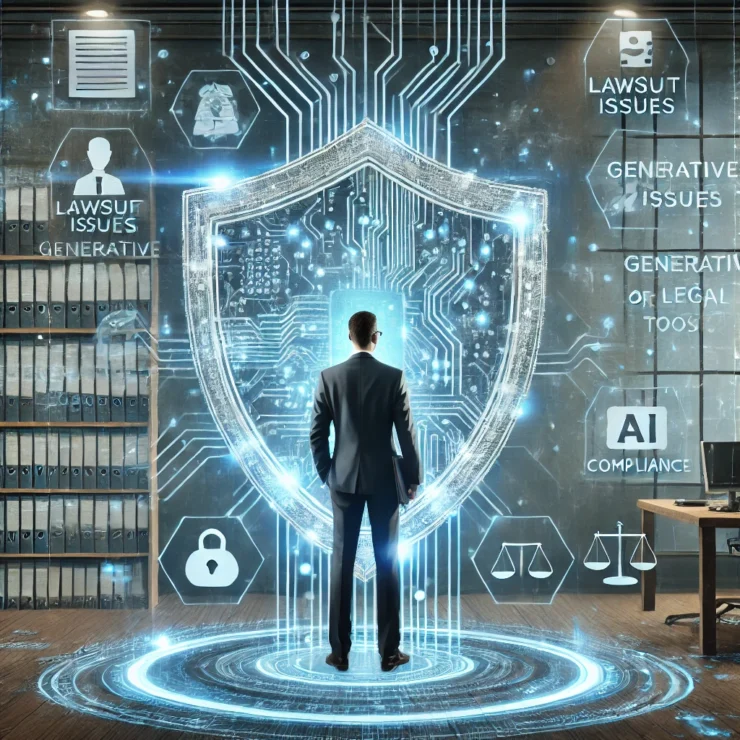
One GenAI legal disruption that’s not talked much about is its potential to head off disputes and problems in advance. Elimination of disputes means less need for lawyers, particularly litigators. I have written about the potential for technology to do just this before. But GenAI and AI have the potential to advance preventive lawyering in ways we haven’t thought of. I learned of one interesting way in a recent conversation with Bruce Kiefer, Vice President of Software Engineering of OpenText.
OpenText is a giant enterprise information management company. It specializes in developing software solutions that help organizations manage and utilize unstructured data, such as documents, emails, and multimedia content.
E-discovery is all about data and data management.
In the past, it has offered a variety of e-discovery related products. But like many e-discovery vendors, it is branching out in various ways, a development about which I have written before. After all, E-discovery is all about data and data management. However, the tools used to find, identify, and determine the relevance and significance of data can be used for tasks beyond e-discovery.
Kiefer told me he sees the potential for “AI agents to survey trends to manage risk portfolios.” By this, he meant the potential for using AI on a forward-looking basis instead of a reactionary basis. He believes, for example, that AI can be used to identify trends and correlations. This, in turn, would enable in-house counsel to perhaps head off problems before they develop. He gave as an example of the problem of airplane exit doors flying off airplanes. Using an LLM to look at all the data surrounding an incident like this would enable a better and faster cause analysis. It would also enable airlines to more timely prevent future incidents from occurring.
We also talked about using LLMs to search through complaints and pleadings nationwide. This would enable in-house counsel to determine whether litigation trends were developing. They could then cogently develop strategies before litigation got out of hand. In-house counsel could also use these tools to look at publicity to determine if a litigation trend could develop.
A human still has to determine if something is interesting and merits further investigation. Or if it is completely irrelevant
Of course, all of this still requires a human to determine if the data really suggests a trend or correlations. Just because something happens close in time to an event doesn’t mean it’s causally related. A human still has to determine if something is interesting and merits further investigation. Or if it is completely irrelevant.

But the opportunities for this kind of forward-looking strategy are significant. Kiefer told me that using this approach would allow for better allocation of capital to risk. LLMs can help identify what is truly a risk and enable in-house counsel and business units to direct capital to that risk. It would prevent the allocation of dollars to what might appear to be risks but really aren’t.
GenAI and LLM will enable in-house counsel to do more and better preventive lawyering.
GenAI and LLM will enable in-house counsel to do more and better preventive lawyering. They could reduce the number of situations the analysis shows could lead to disputes and litigation. A few years ago, I heard a presentation by an in-house counsel of a trucking company in which a similar hypothesis was advanced. Looking at data showed truck drivers were much more likely to have an accident when they did not take their vacation benefits. The result was the imposition of mandatory vacation policies. The number of accidents, in turn, were ultimately reduced. Of course, back then, such an analysis was time consuming and expensive. Now, it can be done with the push of a button.
Lots have been written about what GenAI and AI will do to the way lawyers practice. We may have missed the most significant impact of all: using AI tools to prevent situations that could require lawyering in the first place. Several years ago, I wrote about how technology might disrupt law by eliminating disputes. I got a lot of pushback to that idea. But with GenAI and LLMs, I believe more than ever that legal will move to preventive lawyering. Just as in the medical profession, there will be less reactive lawyering, at least for litigation and dispute management. I’m not sure if law firms are ready.